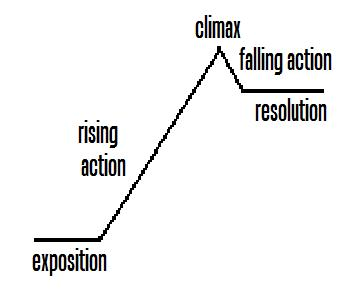Communicators learned two important things during COVID. First, people spend a lot of time in front of a screen. Second, how difficult it is to keep their attention. We used to have about eight seconds to hook a reader, now I suspect it’s half that.
Including stories helps grab and hold readers’ attention. They add a human element. Stories “show don’t tell,” a major focus in fiction. Would you buy the product if a restaurant spokesperson tells you how great their new sandwich is? Or would a customer eating one who says it’s the tastiest sandwich they’ve ever put in their mouth convince you? This goes beyond telling your organization’s story. I’m talking about using stories in almost all of your written and spoken content.

Telling a story is easy. Telling a story well, not so much. I suspect Hemingway would agree. For many reasons – from lack of time or confidence to not wanting to fight brand standards or executives who don’t get it – many marketing, communication, and PR pros shy away from using stories. I understand because I used to. Then I realized how powerful they are. Storytelling also gets exponentially easier with practice and a few tools.
You need three basics to tell a good story: a relatable character, a simple plot with a story arc, and tension. Even kids’ picture books, which have 500 words or less, have developed characters, follow a story arc, and include tension. This Apple Watch commercial is a good storytelling example with character, plot, and tension to spare in 68 seconds.
Your character in business writing is typically a relatable, real or made-up, member of your target audience. This builds on the persona methods marketers commonly use and communicators are starting to use in internal communications. You can dig very deep in developing characters using methods in these Writer’s Digest articles, “The 9 Ingredients of Character Development,” and “Character Development Worksheets.” For business writing, answer these four basic questions:
- What is the character’s vulnerable, relatable situation? What problem are they trying to solve? (e.g., adopt a child)
- What is their plot goal? (e.g., take advantage of their employer’s adoption benefits)
- What is their heart/emotional goal? (e.g., provide a safe and welcoming environment for their new child)
- What is their journey – how does the character change from the beginning to the end of the story? (e.g. quit their job or work with their employer to set up onsite child care)

A simple plot with an arc makes the story. Freytag’s Plot Pyramid is one of the most popular story structure tools authors use. You can follow the same story structure even though your content won’t be as long as a novel.
- Start your story with brief exposition to help readers understand the story including your character’s goal, what motivates them
- Rising action is when you cover what works against them
- The climax is the turning point; the character’s final push to reach their goal
- The character does or does not get what they want during falling action
- Resolution is the new normal
Tension keeps readers engaged. In fiction, there should be tension on every page. My favorite quick trick is to think about the character’s plot or heart goal. Whatever keeps them from achieving that goal adds tension. It could be a person, situation, or lack of something. Think of your favorite movie or novel villain. You could add an antagonist to build tension in your story.
Writing mechanics can make or break your written or spoken content. One of the last things I do before handing a manuscript over to an editor is go through a checklist that includes things like:

- Start with a strong hook. I learned this simple three-step first-line creation process from author Dorian Cirrone. (1) Start the story with a moment of change. (2) Inspire readers to wonder what might happen. (3) Convince readers trouble or disruption will happen. Here’s a fiction example from The Apocalypse of Elena Mendoza by Shaun David Hutchinson, “The apocalypse began at Starbucks. Where else did you expect the end of the world to start?” And a business example I wrote, “One drizzly March 2020 day, Gloria rode the subway to the office as usual. When she got there, she had to send her entire state agency staff home to help keep them safe.”
- Avoid passive voice, especially important in business writing when it’s critical for the reader to know who does what.
- Use visual nouns and active verbs. For example, “It was difficult to use” versus “The software was difficult to use” and “The company could have a problem” versus “A problem plagues the company.”
- Vary sentence and paragraph length. Keep in mind people read on small screens. It’s easy for readers to get lost in a long paragraph that covers multiple screens.
- Avoid overused action verbs and adjectives. For example, “We should focus on improving the customer experience” versus “We must improve the customer experience.”
- Avoid overused adverbs (ly), gerunds (ing), and filler words. The fewer the better. Filler word examples: that, of, almost, so, had, rather, while, quite, well, just, really, which, very, but, and
- Edit for clarity, spelling, grammar, and comma usage.
Don’t be afraid to be a storyteller. If you don’t believe me, here is a timely Ragan article by Ted Kitterman that helps build the case, How to make your writing stand out in the attention economy. The most famous authors continue to develop their craft. No one’s perfect, so don’t hesitate to keep learning and use tools to help. Email me using the contact form if you have questions.
Happy storytelling!


